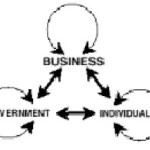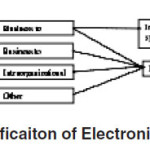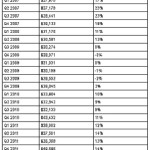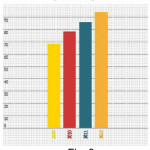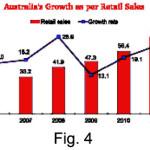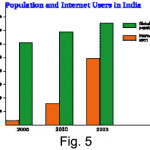Trushar Patel1 and Premal Soni2
1Shree P.M Patel Institute of Business Administation, Anand, India.
2Shree P.M Patel College of Computer Science and Tech. Anand, India.
Article Publishing History
Article Received on :
Article Accepted on :
Article Published :
Article Metrics
ABSTRACT:
This study examines the advantages and possibilities for the use of electronic transactions for their market. It focuses on developing and transition countries that have not fully implemented the use of e-commerce in their economic, commercial and productive processes. An important aim of this research is to create awareness on the likely effects for enforcing the use of digital signatures to carry out e-commerce transactions on the economies of developing and transition countries. The study also proposes key issues to be considered for policy-makers in countries in order to consider in fostering the development of e-commerce.
KEYWORDS:
E-Commerce; Fosterring; Implemented
Copy the following to cite this article:
Patel T, Soni P. E-commerce in Developing Countries. Orient.J. Comp.Sci. and Technol;6(3)
|
Introduction
Economic effects in the future. Internet commerce will change the face of business forever. The e-commerce has affected the global economy in many different ways. First of all, it has affected the information technology, and all the economic sectors, all and above e-commerce has enhanced the productivity growth worldwide and this impact will be discussed.
What is E-Commerce?
It is clear that e-commerce is a very broad concept and does not have a clear cut definition. One way of defining it, is that, it is a way of doing business transactions via the internet. E-commerce or e-business is based on the electronic processing and transmission of data, including text, sound, and video. E-commerce as it is commonly known is the use of technology to conduct financial transactions online E-commerce can occur within and between three basic participant groups – business, government, and individuals (see Figure)
E-Commence Market Models:
Business to Business (B2B)
Business to Business or B2B refers to ecommerce activities between businesses. These transactions are usually carried out through Electronic Data Interchange or EDI.
Business to Customer (B2C)
Business to Customer or B2C refers to ecommerce activities that are focused on consumers rather than on businesses.
Customer to Business (C2B)
Customer to Business or C2B refers to ecommerce activities, which uses reverse pricing models where the customer determines the prices of the product or services. There is increased emphasis on customer empowerment.
Customer to Customer (C2C)
Customer to Customer or C2C refers to e-commerce activities, which uses an auction style model. This model consists of person-to-person a transaction that completely excludes businesses from the equation.
Issues affecting the Development of ECommerce:
1. Taxation
2. Security
3. Privacy
4. Profitability
5. Content
The Problem Facing E-commerce in Developing Countries
Awareness and education:
A lack of awareness is a crucial barrier to the implementation of e-commerce in developing countries.
Market size: business to consumer
E-commerce infrastructure which includes Lack of a certificate authority.
E-Commerce scenario in different countries
E-Commerce in United Kingdom
Well, it’s true that it is quite difficult for small businesses of UK to earn maximum profit as there has been recession period for some time, but this recession period is only for stores not for online stores as growth of e-commerce businesses has continuously get top rated success. You can easily understand the entire concept by looking at the above given graph and get complete idea about E-commerce growth rate in UK.
Commerce in Austrlia
E-Commerce in India
For developing countries like India, ecommerce offers considerable opportunity. Ecommerce in India is still in nascent stage, but even the most pessimistic projections indicate a boom. It is believed that low cost of personal computers, a growing installed base for Internet use, and an increasingly competitive Internet Service Provider (ISP) market will help fuel ecommerce growth in Asia’s second most populous nation. Indian middle class of 288 million people is equal to the entire U.S. consumer base. This makes India a real attractive market for ecommerce. To make a successful ecommerce transaction both the payment and delivery services must be made efficient. There has been a rise in the number of companies’ taking up ecommerce in the recent past. Major Indian portal sites have also shifted towards ecommerce instead of depending on advertising revenue. Many sites are now selling a diverse range of products and services from flowers, greeting cards, and movie tickets to groceries, electronic gadgets, and computers. With stock exchanges coming online
the time for true ecommerce in India has finally arrived. On the negative side there are many challenges faced by ecommerce sites in India. The relatively small credit card population and lack of uniform Credit agencies create a variety of payment challenges unknown in India. Delivery of goods to consumer by couriers and postal services is not very reliable in smaller cities, towns and rural areas. However, many Indian Banks have put the Internet banking facilities. The speed post and courier system has also improved tremendously in recent years. Modern computer technology like secured socket layer (SSL) helps to protect against payment fraud, and to share information with suppliers and business partners. With further improvement in payment and delivery system it is expected that India will soon become a major player in the ecommerce market
The current estimate of US$ 6.79 billion for year 2010 is way ahead of the market size in the year 2007 at $1.75 billion. The following chart depicts the growth of E-commerce in India in the last couple of years.
Advantages of E-Commerce to Businesses in India
There is a growing consciousness among the business community in India about the opportunities obtainable by e-commerce. Ease of Internet access and navigation are the critical factors that will result in quick implementation of Net commerce. Safe and secure payment modes are vital also along with the need to discover and popularize innovations such as Mobile Commerce. India Reports provide correct and easy to understand India exact reports that capture trends, map business landscapes and custom-made reports for specific needs. The other reports available on India Reports are on retail, outsourcing, tourism, food and other emerging sectors in India. E-commerce provides a new venue for connecting with consumers and conducting transactions. Virtual stores operate 24 hours a day, 7 days a week. Many practical retailers represent a single company while others, such as Top Online
Shopping (toponlineshopping.com), represent a consortium of companies.
Worldwide Trade
E-commerce is one of the most important factors in the globalization of business. Other factors comprise reduce in trade barriers, globalization of capital markets, the movement toward International Financial Reporting Standards (IFRS), and Internet financial reporting. Internet financial reporting has been predominantly helpful to e-commerce companies (Hunter and Smith 2008). IFRS is a global standard for accounting and financial reporting (Smith 2008). The annual growth rate of e-commerce globally has been predictable as high as 28 percent, while some individual countries have much higher growth rates.For example, in India, which has a younger than average market, the e-commerce growth rate has been projected as high as 51 percent.
Practical Businesses
As a result of e-commerce, business firms now have the capability to happen to virtual businesses. A virtual business is a modular organization of multiple individual business rigid connected via online computer technology. The entity firms making up the virtual business are networked, which enables sharing of skills, costs, and access to markets. An individual business firm contributes only its core competencies. The value of a virtual business is that they have the flexibility required to seize new opportunities and be competitive in a complex market. Inferior search costs The Internet is likely to carry about low search costs and high price transparency. When participant simply publish their prices on the Internet, it is possible to design search engines that will monitor prices across different websites and this will be further facilitate by the growth of protocols such as XML. Such price transparency may make easy collusion. Internet technology could potentially offer an ideal micro-climate for Collusion, due to augmented communication and transparency in the market, as well as the possible for more frequent market connections.
Facilitators of e-commerce in India
Information directories
The products and services a relisted with appropriate subheadings to make it easy for a serious information seeker to find what he wants.Allied services provided by them: Message boards, chat rooms, forums, etc.
Banks
Net banking/phone banking:
This is an online banking facility available for savings account holders as well as current account holders. Some of the special Net banking services are:
Demat accounts for sale/purchase of stocks and shares, Foreign Exchange services, Direct/Instant payment of bills on the account holder’s behalf, Financial Planning
Credit/Debit Cards
Banks facilitate E-commerce by providing the most vital trade instrument, namely the Credit or Debit Card, without which E-commerce would be impossible.
Role of Government
Government can, however, play an important role in examining the economic and social impact of ecommerce technologies and in promoting understanding and application of these technologies throughout Indian industries and communities.
Facilitating market access and business opportunities, especially for small, medium, and micro enterprises (SMMEs), on a national and global scale.
Providing educational and skills development resource
Supporting the rapid deployment of necessary infrastructure
´ Facilitating the development of MPCCs as vibrant seeding points for community knowledge and wealth creation, above and beyond the provision of the latest ICTs.
´ Developing “model use” programmers for the dissemination of government information and services using e-commerce platforms, e.g., for electronic tender processes.
Economic impact
´ Governments and particularly businesses are confronted with an “adapt or die” scenario, mainly in developing countries, to fall following in technology and innovation could increase the gap with wealthier, more advanced economies.
´ E-commerce presents exclusive occasion for less developed countries to greatly expand their markets, both internally and externally. Externally, the Internet and other technologies may allow for low-cost international trade, even for small, local businesses. Internally, many groups of citizens who had been considered “marginalized” and “unbanked” may gain reasonable access to financial services, and may thus contribute more readily in all aspects of the economy.
´ Rural areas considered too costly or unprofitable for business development might increasingly become a focus for investment and market expansion, and also for relocating corporate offices.
Conclusion
New E-commerce is still in its formative stage. The business-to-business and intra-organizational segments currently dominate e-commerce. Many major digital retailers are as yet in the investment and brand-building mode and show no profits; yet man established retailers realize profits from the new selling channel. Buoyant growth is apparent throughout.
References
- http://www.comscore.com/Insights/ Press_Releases/2013/5/com Score_Reports_Q1_2013_Desktop_ Based_ US_Retail_ ECommerce_ Spending
- http://ecommercedevelopment solution.wordpress.com/2013/02/27/e-commercegrowth-in-different-countries-overallresults/
- E-commerce and Economic Development”Mahesh C Purohit Vishnu Kanta Purohit. Foundation for Public Economics and Policy Research
- E-commerce a managerial perspective 2012 by Efraim Turban & David King

This work is licensed under a Creative Commons Attribution 4.0 International License.
